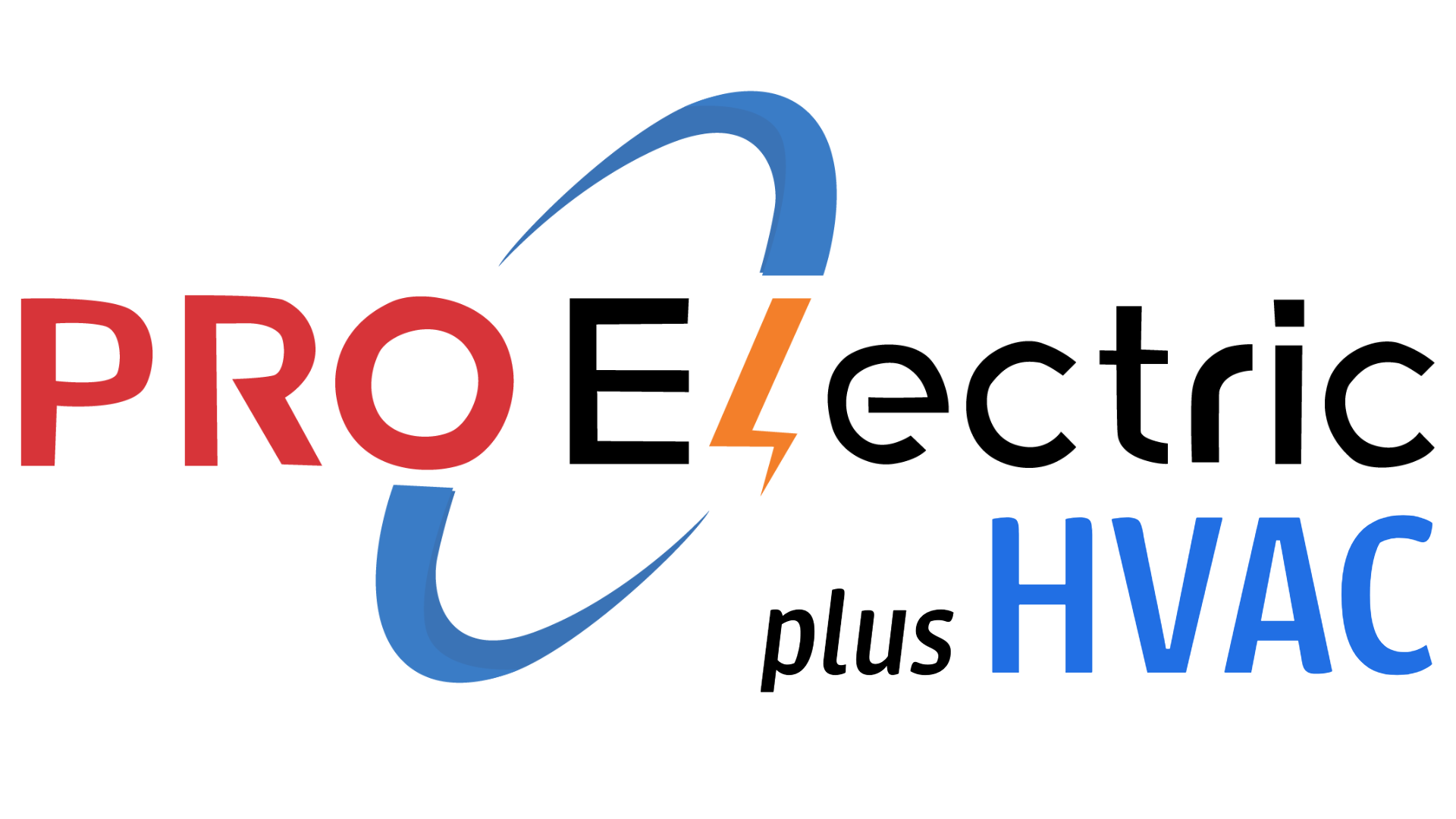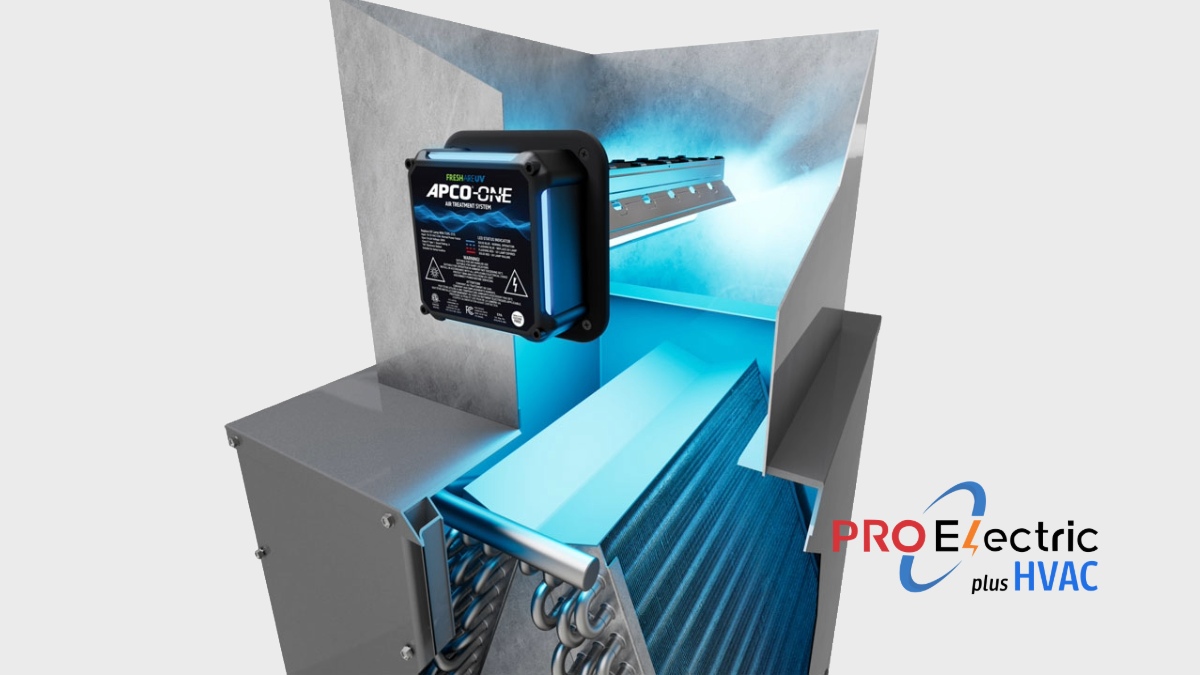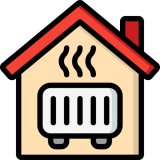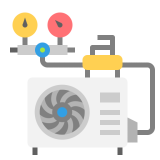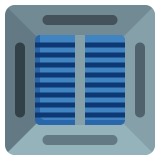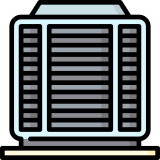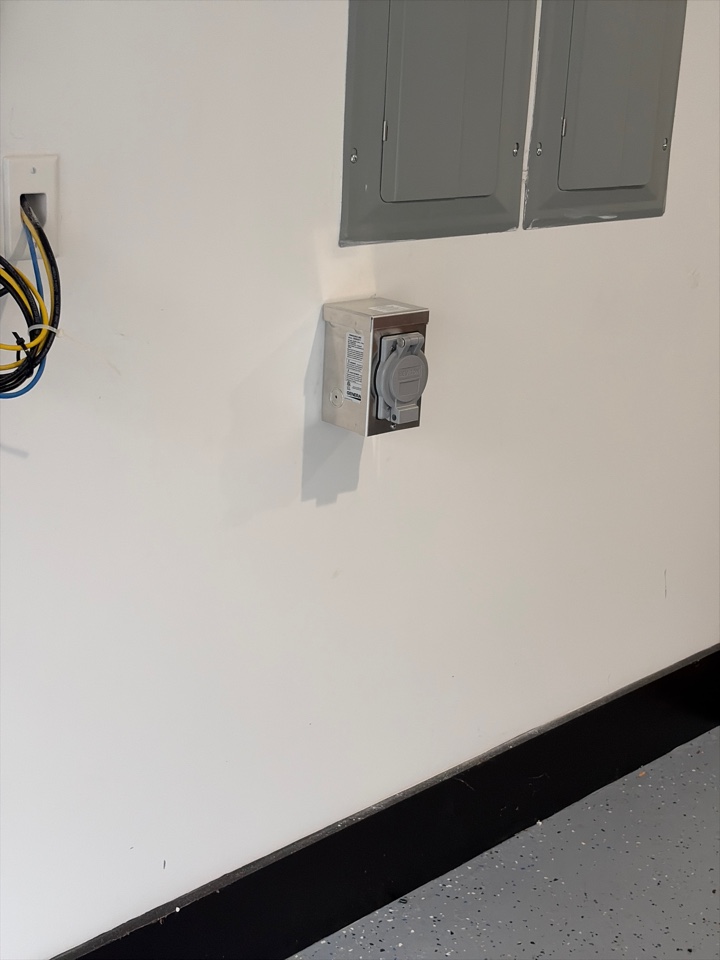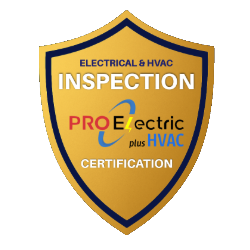CERTIFIED HVAC TECHNICIANS - AIR QUALITY EXPERTSHVAC UV Light
What Exactly Are HVAC UV Lights and What Do They Do?
UV (Ultraviolet) light is a kind of electromagnetic radiation on the spectrum between visible light and X-rays.
It is available in three kinds: UVA, UVB and UVC.
While UVA and UVB rays are known for causing sunburn and skin damage, UVC reigns supreme as a germicide.
UVC light can attack the DNA of bacteria and viruses to kill them off.
UVC lights are used in your HVAC system to sterilize the air and internal surfaces, significantly improving the air quality of your home.
Because it kills microbes, UV lights make your home healthier for you and your family.
UV lights alter your HVAC system by attacking and killing dangerous microorganisms your traditional filters might not.
In HVAC systems, there are two UV lamps:
Air Sanitizing UV Lamps:
Placed in your ductwork, the lights clean the air that enters your system. As the breeze moves by, UV light destroys airborne bacteria, viruses, and allergens, giving you clean air throughout your house.
Coil Sanitizing UV Lights:
Placed next to the evaporator coil, they dehydrate and avoid the spread of mold and bacteria on damp areas.
Because the evaporator coil is prone to condensation, it offers the perfect breeding ground for microbes that interfere with the functioning of your system and its cleanliness.
Keeping the coil clean keeps UV lights better air flow, heat exchange and save energy.
If you add UV lights, you’re not only purifying the air – you’re improving your HVAC system’s performance and reliability.
Your HVAC system will be equipped with UV lights that have multiple other advantages in addition to purer air:
Better Air Quality
UV lights kill as many as 99% of contaminating microbes, such as bacteria, viruses, spores, and allergens, making it healthier for you and your family.
Dissipation of odors
UV lamps digest volatile organic compounds (VOCs) that leave behind a stink from cooking, animals, smoking, or chemicals to make your house smell better.
Energy Efficiency
Your HVAC system runs better with cleaner coils and ducts. UV lamps deter microbial growth that blocks airflow and heat loss, saving you energy and costs.
Longer Equipment Life
Keep major parts like the evaporator coil clean; UV lights will wear down your equipment. That means fewer breakdowns, less work, and a longer-lasting HVAC system.
Reassurance
Being reassured that your indoor air is actively filtered can be reassuring, particularly for allergy sufferers, asthmatics, or those with compromised immune systems.
By putting in UV lights, you’re investing in your home’s health, energy and comfort.
UV lights provide many advantages, but there are risks:
Safe Information
Direct exposure to UV light damages skin and eyes. With the right installation from a trained technician, UV light is kept inside the HVAC system and is not harmful to you or your family.
Maintenance
UV bulbs fail in time and must be replaced every year or every two years to keep them effective.
Short Range
UV Lights kill microbes but not dust, pet dander, or other larger particles. You still have to clean your filters and ducts regularly to ensure proper air quality.
Please analyze all of these details and talk to an HVAC professional before deciding whether UV lights are the right choice for your particular situation.
TOP 25 QUESTIONS & ANSWERSHVAC UV Light FAQS
HVAC UV Light Systems
Q1: So, UV lights in my AC… is this, like, some kind of space-age air purifier thing? What are these things?
A: “Haha, ‘space-age air purifier,’ I like that! Yeah, HVAC UV lights – they’re basically special light bulbs that zap stuff in your AC system with ultraviolet light. Think of it like… sunshine for your ducts, but the germ-killing kind. Not quite space age, but pretty neat tech.”
Q2: Okay, but what do they actually DO? Like, what’s the point of having a UV light in my ducts?
A: “Good question! They’re mostly for killing mold, mildew, and bacteria that can grow inside your AC system, especially on that cool, damp coil. Less of that gunk, cleaner air coming out of your vents, potentially less allergy stuff floating around. That’s the idea, anyway.”
Q3: Do they really work though? Or is it just another one of those… fancy gadgets that doesn’t really do anything?
A: “Heh, skepticism is healthy! Effectiveness of HVAC UV lights is… well, it’s not a miracle cure for everything, but yeah, they do work to a point. UV-C light, the kind we use, is known to mess with the DNA of microorganisms – mold, bacteria, viruses. In a controlled environment, like your ducts, they can reduce that stuff. It’s not a total sterilizer, but it can make a difference.”
Q4: Are these UV lights safe? Aren’t UV rays… you know… bad for you? Like sunburns and stuff?
A: “Safety first, always! Safety of HVAC UV lights is important. The UV lights we use in HVAC are UV-C, which is a higher energy UV, but… they’re installed inside your ductwork, where you can’t see them or get directly exposed. The light stays inside the system. It’s not like blasting your rooms with UV. As long as they’re installed and maintained right, they’re safe.”
Q5: I’ve heard some UV lights make… ozone? Is ozone good or bad? Should I be worried about ozone from my AC?
A: “Ozone, yeah, that’s a valid concern. Ozone production by UV lights – some older or cheaper UV lights, especially some UV-A or UV-B type, can produce ozone as a byproduct. Ozone in high concentrations isn’t great to breathe. Good HVAC UV lights, the UV-C type, shouldn’t produce significant ozone, or they produce very low ozone – ‘low ozone’ models. We install low-ozone or ozone-free UV-C lights to avoid that worry.”
Q6: Where do these UV lights actually go in my AC system? Are they just stuck in the ducts somewhere?
A: “HVAC UV light placement – usually, we install them inside your ductwork, yeah, often near your indoor coil. The coil is the dampest part, where mold and stuff are most likely to grow. Sometimes we put one near the coil, and another one further down the duct run to zap anything that gets past the first one. They’re usually mounted with screws or magnets, inside the metal duct.”
Q7: Can I just, like… stick a UV light bulb I bought online in my ducts myself? DIY UV light install?
A: “DIY, eh? DIY HVAC UV light installation… I’d really advise against it, honestly. First off, you’re messing with electrical stuff inside your HVAC system, which can be dangerous if you don’t know what you’re doing. Second, you gotta mount it right, wire it in safely, and make sure it’s the right kind of UV light for HVAC. Third, if you mess something up, you could void warranties or even damage your system. Best to have a pro handle it, to be safe and do it right.”
Q8: How long do these UV light bulbs last? Do I have to replace them all the time?
A: “HVAC UV light bulb lifespan – good news, they don’t burn out super fast. Most good UV bulbs for HVAC are rated to last around 1-2 years of continuous operation – some even longer. It’s not like changing a regular light bulb every month. But yeah, they do need replacing eventually to keep working effectively.”
Q9: How do I know when the UV bulb needs changing? Is there a little light that tells me “UV light expired?”
A: “Heh, no little ‘UV light expired’ light, unfortunately. HVAC UV light bulb replacement indication – most UV systems don’t have a super obvious indicator. Some fancier ones might have a little LED light that shows the bulb is powered on. But really, the best way is just to replace the bulb every 1-2 years as preventative maintenance. We usually recommend doing it during your annual HVAC tune-up.”
Q10: What happens if the UV light bulb burns out? Does my whole AC system break down?
A: “HVAC UV light bulb burnout effects – relax, if the UV bulb burns out, it’s not gonna make your whole AC system crash and burn! The UV light is a separate component. If the bulb goes, the UV air purification just stops working, that’s all. Your AC will still heat and cool just fine. Just… less UV germ-zapping action.”
Q11: Do I need to clean these UV lights? Do they get dusty or anything?
A: “HVAC UV light cleaning – not super often, no. Because they’re inside the duct, they don’t usually get that dusty. But yeah, over time, dust can accumulate on the bulb surface, which could reduce its UV output a bit. During your annual tune-up, we can usually give the bulb a quick wipe-down if needed, just to keep it shining bright.”
Q12: I have terrible allergies. Will a UV light in my AC magically cure all my sniffles? Is it a miracle allergy fix?
A: “Haha, ‘magic allergy cure,’ wouldn’t that be nice? UV lights and allergies – I gotta be honest, UV lights are not a miracle allergy cure. They can help reduce mold and bacteria in your HVAC system, and that can potentially help some people with allergies, especially mold allergies. But allergies are complex. UV lights are just one piece of the puzzle. They’re not gonna eliminate all allergens in your house – dust mites, pollen, pet dander, etc. Think of them as part of a broader strategy for cleaner indoor air.”
Q13: My house always smells kinda… musty. Could a UV light fix that musty smell in my AC?
A: “Musty smell? Yeah, that’s often mold or mildew. UV lights and musty odors – UV lights can definitely help reduce musty smells coming from your AC system, especially if the smell is caused by mold or mildew growing on the indoor coil or in the ducts. By killing that mold and mildew, you can often knock down those musty smells. But, gotta find the source of the moisture problem too, not just mask the symptom.”
Q14: I’m worried about germs and viruses, especially in the winter when we’re all stuck inside. Will a UV light kill germs and viruses in my house air?
A: “Germs and viruses, yeah, top of mind for everyone these days. UV lights and germ/virus reduction – UV-C light is effective at inactivating many types of bacteria and viruses in the air stream that passes directly by the bulb. However, an HVAC UV light is not gonna sterilize all the air in your house instantly. Air has to circulate through your ducts and past the light to get treated. It can help reduce airborne germs and viruses in your HVAC system, but it’s not a complete ‘germ shield’ for your whole house. Think of it as adding another layer of defense, not a magic bullet.”
Q15: Are there different kinds of HVAC UV lights? Or are they all just… UV light bulbs?
A: “Yep, types of HVAC UV lights – there are a few main types. Coil sterilization UV lights – those are designed to shine directly on your indoor coil, to prevent mold and biofilm growth right there. Air sterilization UV lights – these are designed to be placed in the ducts to treat the air as it passes by. Some systems use both types for extra oomph. And then there are different kinds of UV light – UV-C is the germ-killing type, UV-A and UV-B are less effective for that, and can produce more ozone.”
Q16: Do UV lights replace my air filter? Can I just stop changing my air filter if I have a UV light?
A: “Whoa, hold up! UV lights vs. air filters – NO, UV lights absolutely do not replace your air filter! Air filters and UV lights do different jobs. Air filters are for trapping dust, pollen, pet dander, and other particles – the physical stuff in the air. UV lights are for killing microorganisms – the biological stuff. You still gotta change your air filter regularly, UV light or no UV light. They work together, not instead of each other.”
Q17: Are UV lights expensive to run? Will my electric bill skyrocket if I install one of these things?
A: “HVAC UV light operating cost – nah, they’re surprisingly cheap to run. UV bulbs for HVAC usually use about the same amount of electricity as a regular light bulb – maybe 40-60 watts, something like that. Running a UV light 24/7 is gonna add a few bucks to your monthly electric bill, maybe, but it’s not a huge energy hog.”
Q18: What’s a “ballast” on a UV light system? Is that important?
A: “HVAC UV light ballast – yeah, the ballast is like the… electrical brain box for the UV bulb. It regulates the power to the bulb, makes sure it’s getting the right voltage and current to shine properly. Ballast failure is a thing that can happen over time, just like any electrical component. If the ballast goes bad, the UV bulb won’t light up.”
Q19: Can I see the UV light working? Is there a cool purple glow in my ducts now?
A: “Haha, no cool purple duct rave, sorry! Visibility of HVAC UV light – UV-C light is actually invisible to the human eye. Some UV systems might have a little indicator light on the outside of the unit, just to show it’s powered on, often a dim blue or green LED. But you’re not gonna see a bright purple glow coming from your vents, no. It’s working silently inside.”
Q20: Do UV lights help with… pet odors? My dog can get a little… fragrant sometimes.
A: “Pet odors, yeah, pets are awesome, but sometimes… UV lights and pet odors – UV lights are not really designed to eliminate odors directly. They’re for killing microorganisms. Pet odors are usually caused by… well, organic compounds, not necessarily living organisms. UV lights might indirectly reduce some bacterial odor components, but they’re not gonna be a magic pet odor eliminator. For odors, you need good ventilation, air filtration, and maybe some good old-fashioned cleaning.”
Q21: I smoke indoors. Will a UV light clean up cigarette smoke in my house air?
A: “Cigarette smoke, tough stuff. UV lights and cigarette smoke – again, UV lights are not really designed for smoke removal. Smoke is made of tiny particles and gases, not primarily living organisms. UV lights won’t filter out those particles or break down those gases. For smoke, you really need air purifiers with activated carbon filters to absorb odors and particles, and ideally, better ventilation, and… well, maybe cutting back on the smoking would help most, haha.”
Q22: Will a UV light make my AC system more energy efficient? Will it save me money on my electric bill?
A: “Energy efficiency, always a good question! UV lights and HVAC energy efficiency – indirectly, UV lights can help your AC system be a little more efficient, in the long run. By keeping the indoor coil cleaner from mold and biofilm, it might help maintain better airflow across the coil and slightly improve heat transfer. But it’s not a major energy saver, like upgrading to a super-efficient AC unit. The main benefit is air quality, not energy savings.”
Q23: Are UV lights noisy? Will I hear a buzzing sound coming from my ducts now?
A: “Noise? Nope, HVAC UV light noise is basically zero. They don’t have any moving parts, no fans, no motors. A good UV light system should be completely silent. If you do hear buzzing or humming from your ducts after a UV light install, that’s not the UV light itself – it’s probably something else, maybe related to the install, maybe just coincidence. UV lights themselves are silent operators.”
Q24: What kind of maintenance do UV lights actually need, besides replacing the bulb? Anything else to do?
A: “HVAC UV light maintenance – pretty minimal, honestly. Main thing is that bulb replacement every 1-2 years, like we talked about. Beyond that, just occasional visual check during your tune-ups to make sure the bulb is still glowing (if you can see it, some are shielded), and maybe a quick wipe-down if it looks dusty. Not much else to do, they’re pretty low-maintenance.”
Q25: So, bottom line… are HVAC UV lights worth it? Are they a good thing to add to my system, or just a waste of money?
A: “Are HVAC UV lights worth it? That’s the million-dollar question, right? Look, they’re not a magic bullet, and they’re not gonna solve every air quality problem. But, for reducing mold and bacteria inside your HVAC system, they can be effective. If you’re concerned about mold, musty smells, or you’re looking for an extra layer of air purification, especially if someone in your family has allergies or respiratory sensitivities, then yeah, UV lights can be a worthwhile addition. They’re not gonna break the bank to run, and they can offer some real benefits for certain situations. ‘Worth it’ kind of depends on your specific needs and priorities, but they’re definitely a legit air quality tool, not just snake oil.”
Hope that clears up the UV light mystery a bit, with a little HVAC tech flavor! Let me know if you have any more burning questions! 😉
Recent Jobs and Reviews in Falls Church, VA
Reviews
Good as always
We have been using Pro Electric several times already. Everyone on the team is nice and got job done without hiccups. Highly recommended.
– Falls Church, VA 22043
Great
– Falls Church, VA 22042
